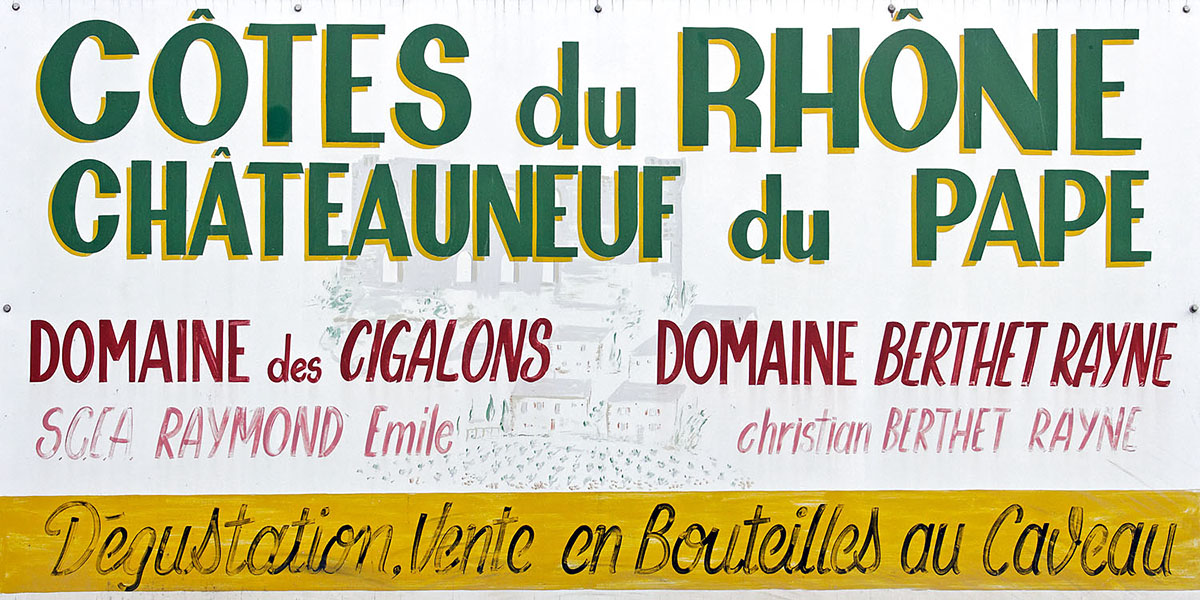
Click on any image to see a larger (1500 x 1000 pixel) version!
Located 19 kilometers (~12 miles) north of the papal city of Avignon in the southern part of the Rhône valley, the small village of Châteauneuf-du-Pape with its roughly 2,000 inhabitants is famous the world over for having given its name to one of the finest French wines.
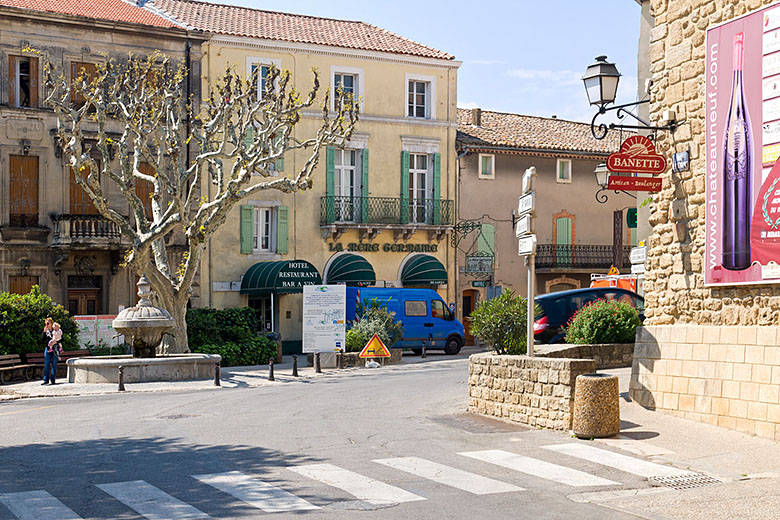
|
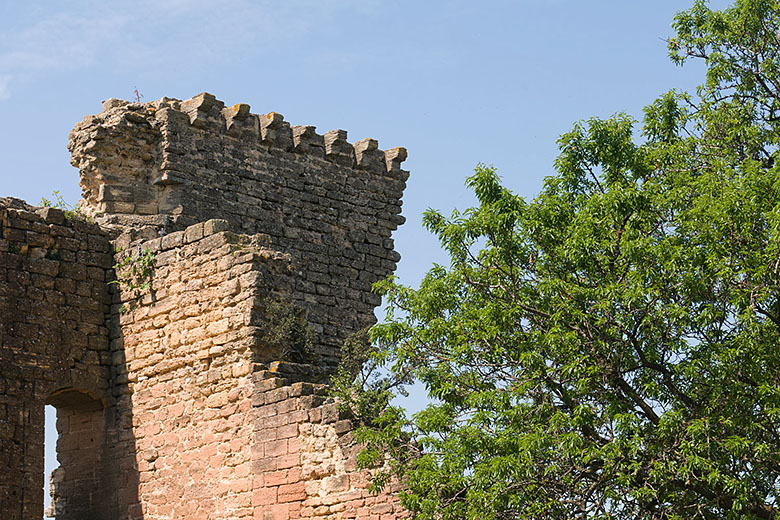
|
Châteauneuf-du-Pape village center |
The ruin of the old castle towers above the village |
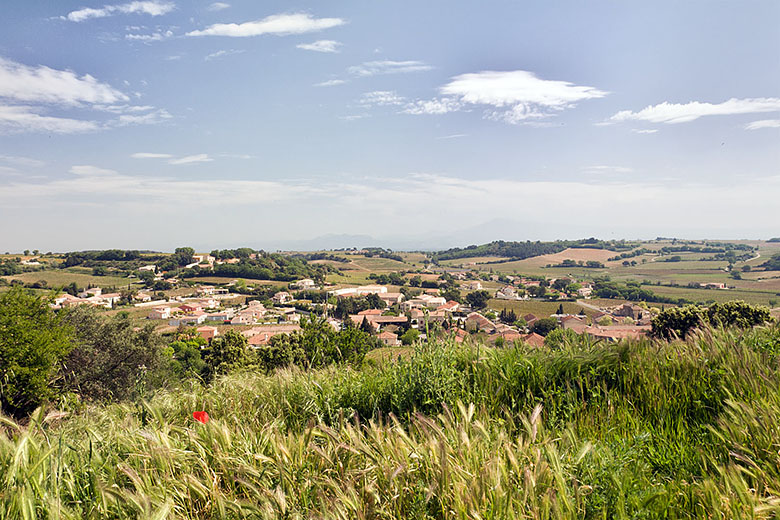
|
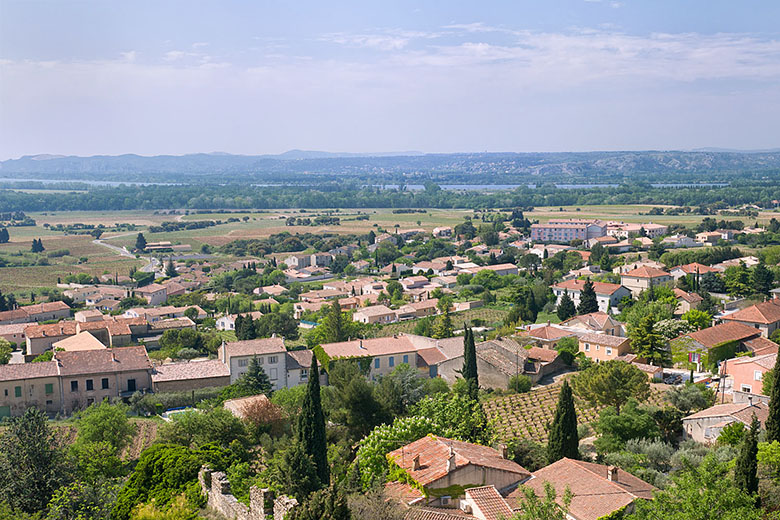
|
The view from the castle to the east... |
...and to the southwest towards the Rhône |
It is an AOC (Appellation d'origine contrôlée) wine, which means that in order to call their product Châteauneuf-du-Pape, vintners must be located in a precisely defined geographical area and follow very strict rules during the winemaking process. The 116 vineyards that make this wine are spread across 3,200 hectares (~7,900 acres) and produce just over 100,000 hectoliters (~2,640,000 gallons) of wine each year. According to AOC rules, no more than 35 hectoliters (~925 gallons) of wine may be produced per hectare (~2.5 acres).
On April 21 2011, my friend Didier (look at my Sainte Victoire and Camargue pages if you don't remember him) and I were fortunate enough to be invited to a behind-the-scenes look at the wonderful Domaine Berthet-Rayne. This winery, located some five kilometers (~3 miles) north-northeast of the village as the crow flies, was founded in 1920 and has remained in the same family every since. In fact, Mrs. Berthet-Rayne, the granddaughter of the founder, was our hostess during our visit, though we also had a lovely chat with her husband Christian and their daughter Laure who, together with her husband Martial, makes up the fourth generation of the family to produce wine on the estate.
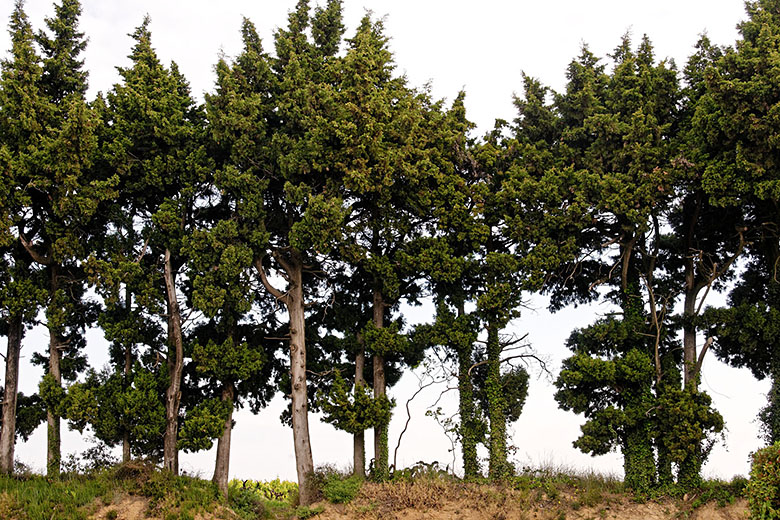
|
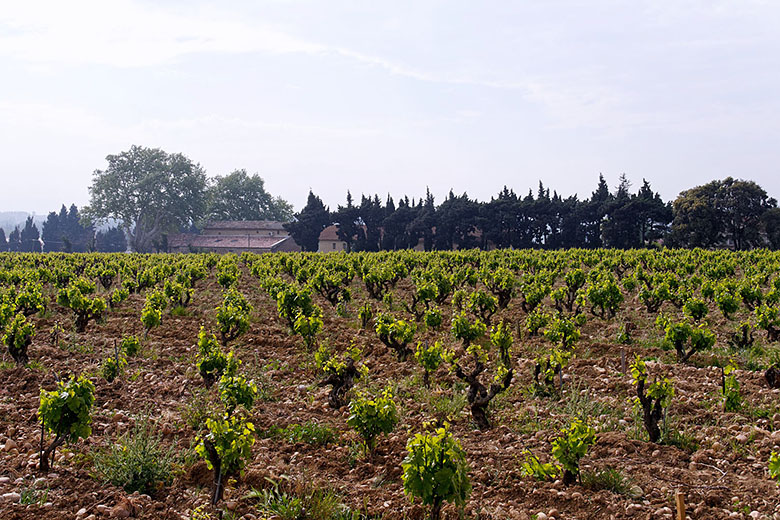
|
A row of cypress trees separates the winery from the vines |
In April the vines are still very small |
The winery is separated from the vines by a row of cypress trees; these trees are often used in this area to protect crops from the Mistral. When we arrived at the winery, Christian Berthet-Rayne was out with his tractor spraying sulphur on the vines. Sulphur is a powerful natural fungicide that is particularly effective in preventing powdery mildew, a disease that impedes the maturing process of the grapes. Natural sulphur is also compatible with organic agriculture, a concept the estate started converting to in 2002. Since 2007, bottles from the Domaine Berthet-Rayne carry the label "wine made with grapes produced from organic agriculture". Why not simply call the wine organic? Because it contains sulfites, an essential antioxidant and antibacterial ingredient without which proper aging of the wine would not be possible. Though the level of sulfites is kept to a minimum, it is still incompatible with the label "organic". Until someone comes up with a natural replacement for sulfites, it will for all practical purposes remain impossible to make wine that is truly compatible with the current use of the word "organic".
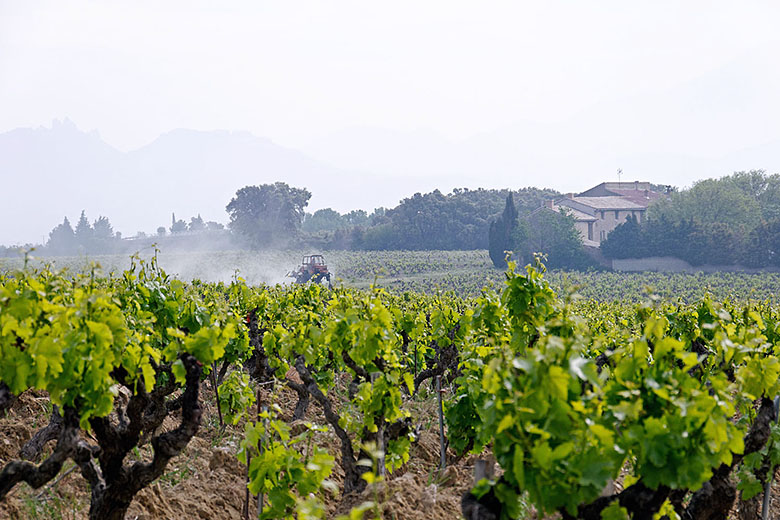
|
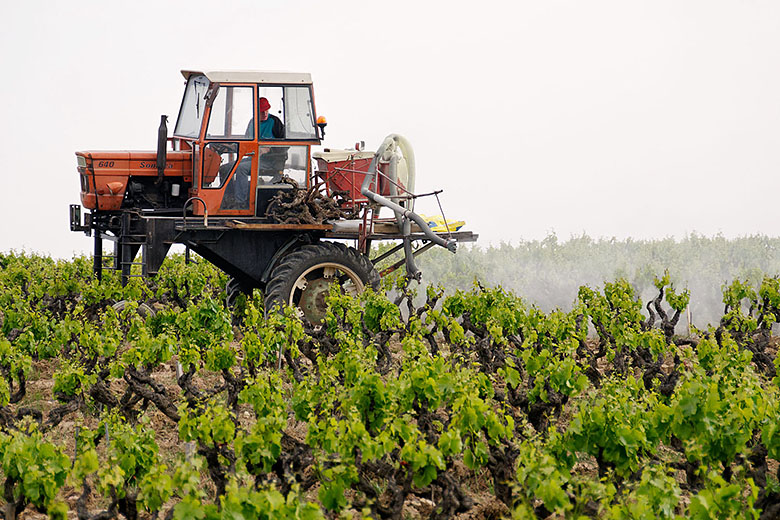
|
Spraying all the vines with sulphur is a great deal of work! |
Zooming in for a closer look |
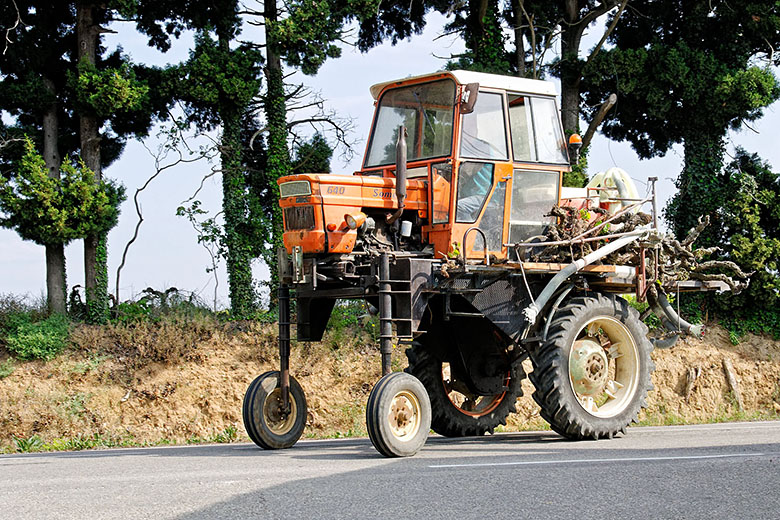
|
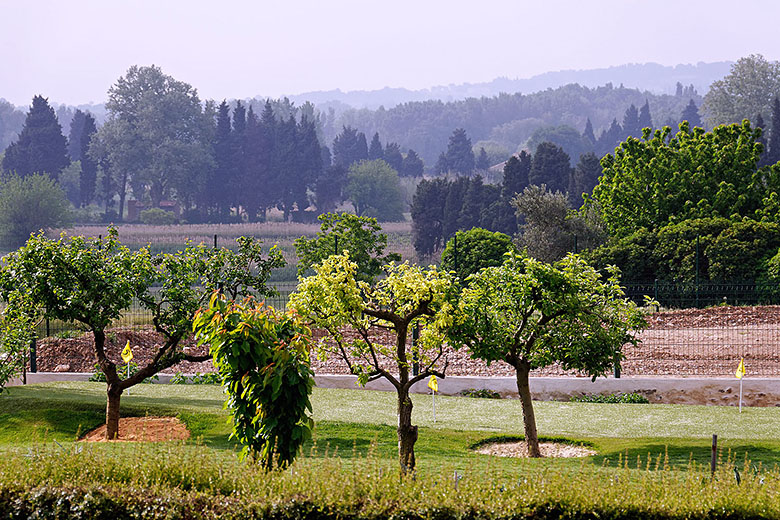
|
Mission accomplished! |
Behind the winery |
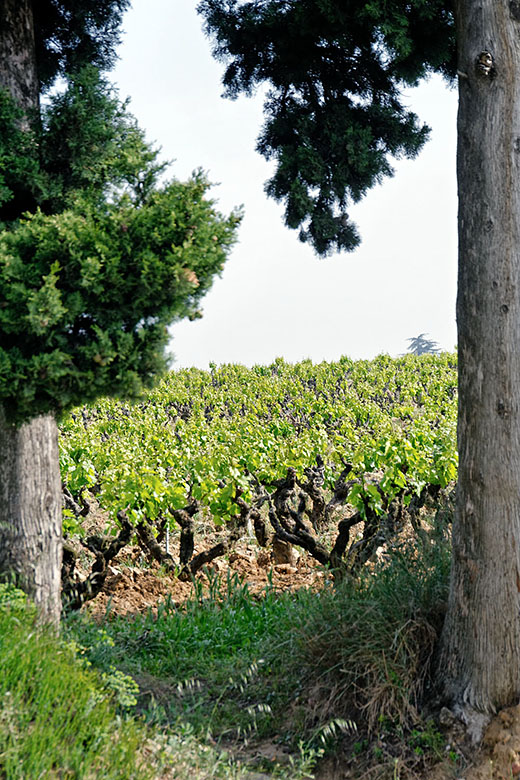
|
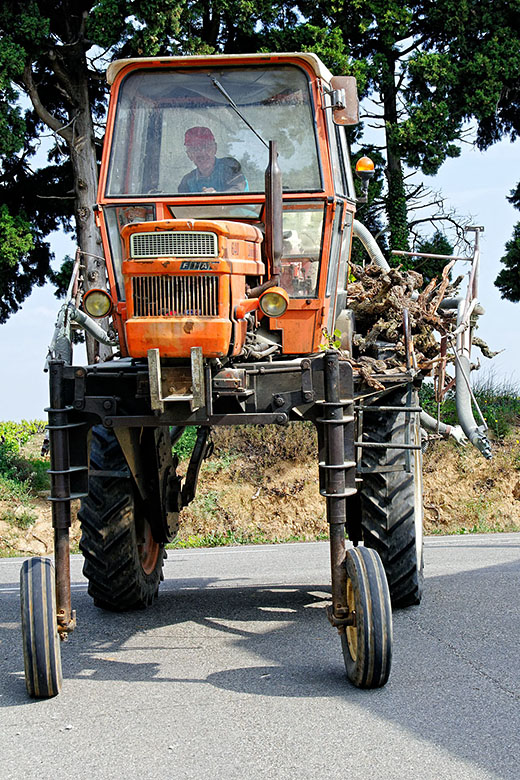
|
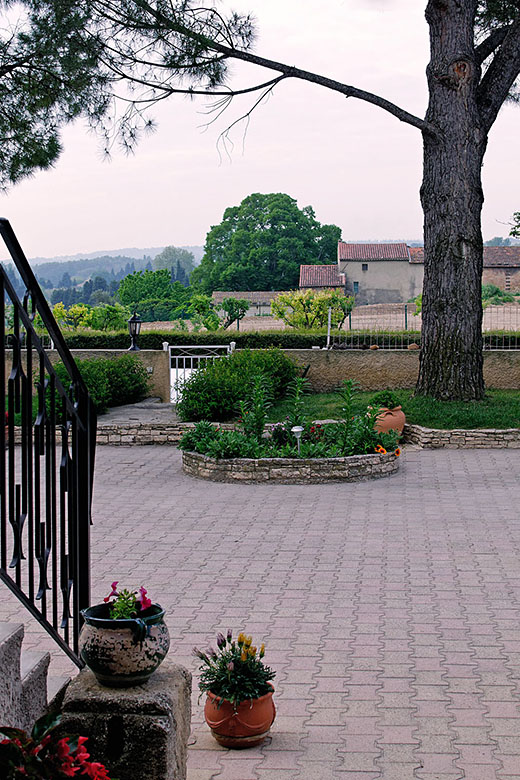
|
Future wine |
Tall enough to straddle vines |
The terrace behind the winery |
The Domaine Berthet-Rayne produces roughly 50,000 bottles of Châteauneuf-du-Pape and Côte-du-Rhône every year. Vintners in this area work with up to 13 varieties of vines, but typically, only a few of these are used for any one wine. For example, the 2009 Berthet-Rayne Châteauneuf-du-Pape "Tradition" was made with with 65% Grenache, 20% Mourvèdre, 10% Cinsault, and 5% Syrah. Each variety adds its special characteristics to the wine. After a traditionally long fermentation period of 3 to 4 weeks in cement vats, the wine is left to settle before being bottled.
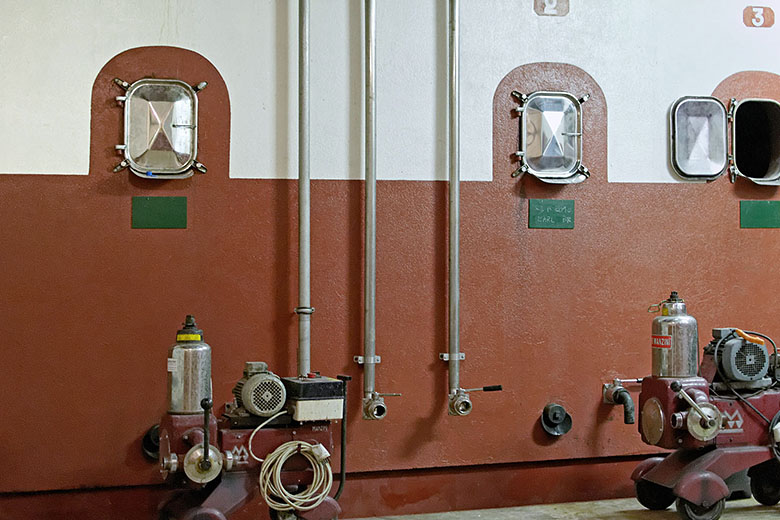
|
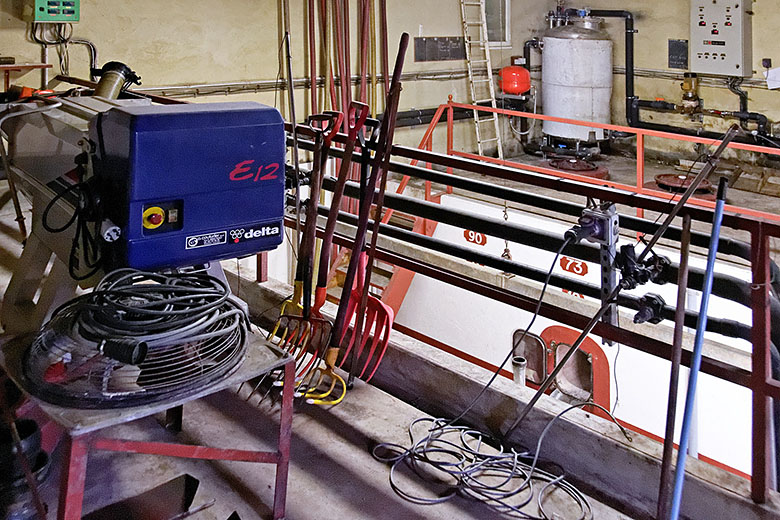
|
Cement vinification vats (80 hl or ~ 2000 gallons each) |
Above the cement vats |
On top of the vats are circular hatches. Note the fan on the table in the foreground (above right): it fits over an open hatch so that once a vat has been emptied, the fan can extract the highly alcoholic fumes. This process takes several hours before it is safe for someone to enter the vat, remove the fermentation build-up, and scrub the inside with tartaric acid.
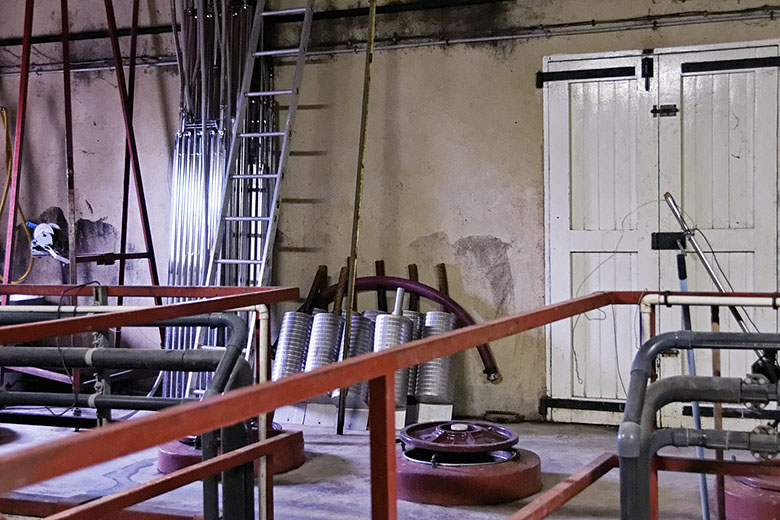
|
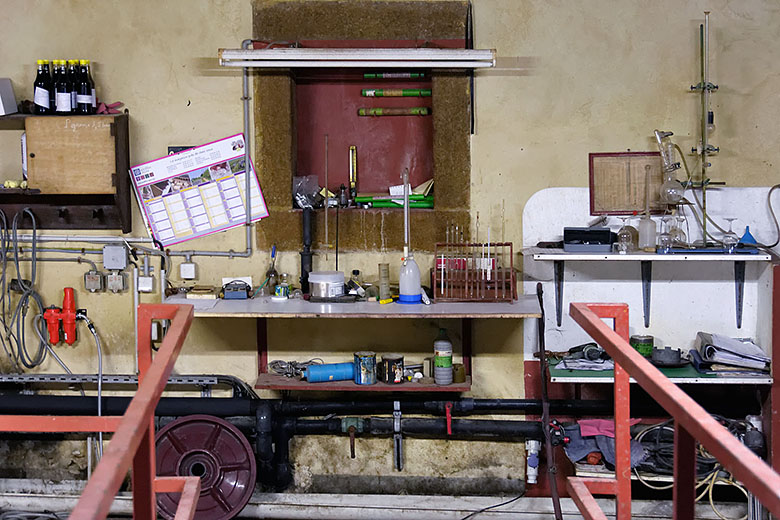
|
One of the round hatches through which the vats are filled |
Every item serves a very specific purpose |
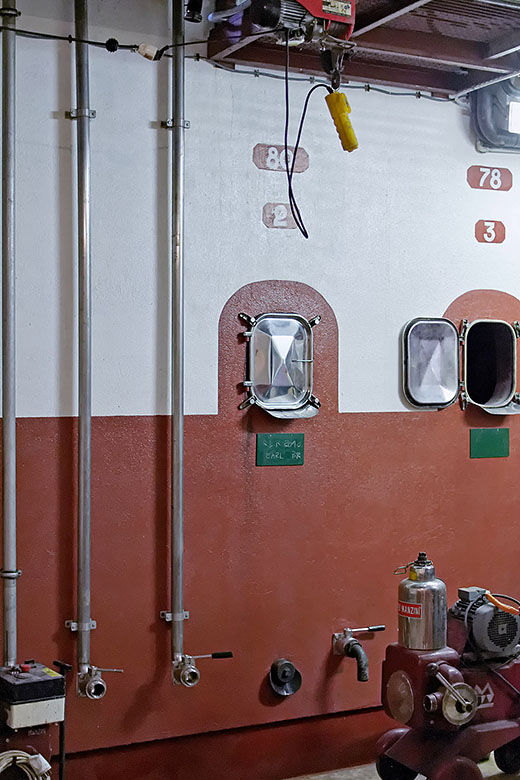
|
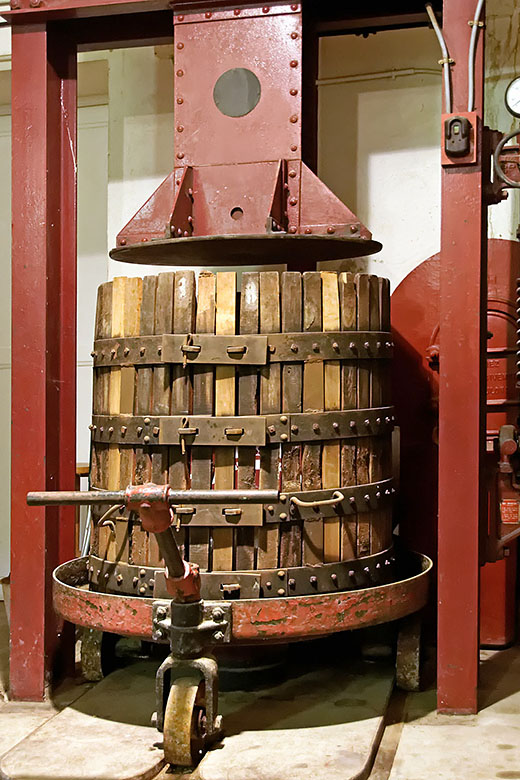
|
Back on ground level |
Retired press from another age |
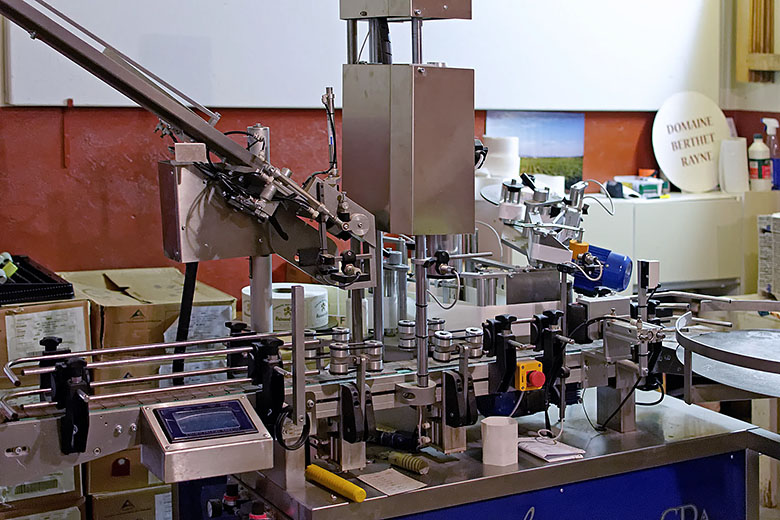
|
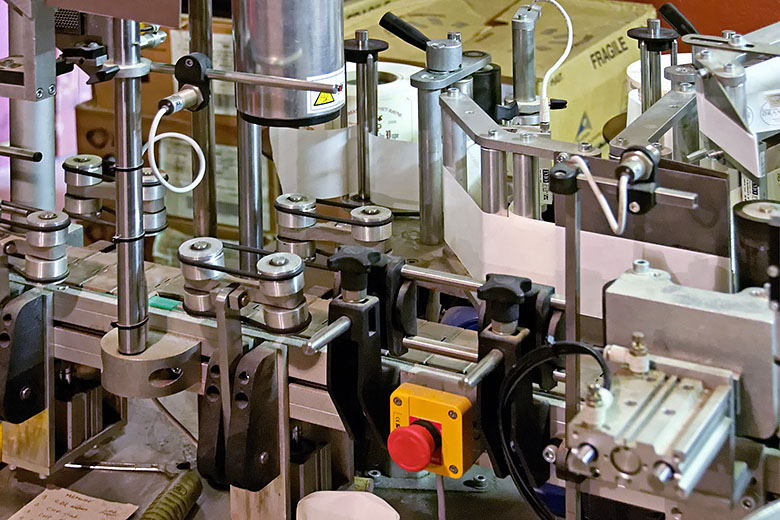
|
Corking, capping and labeling machine |
Detail view |
While the above machine can handle small quantities, the bulk of the bottling is done during four days each year. A bottling assembly line is brought to the estate, and each day yields between 10,000 and 15,000 bottles. Certain wines are aged in oak casks for a year before bottling. For instance, this is the case of the Berthet-Rayne Châteauneuf-du-Pape rouge 2009 Cuvée "Vieilli en Fût de Chêne". This type of aging substantially alters the flavor of the wine in very harmonious ways. The drawback for the vintner is that a substantial amount of the wine soaks through the wood of the casks and evaporates. This is called la part de anges, or "the share of the angels". Regardless of whether the wine is bottled immediately or is allowed to settle in an oak cask first, the filled bottles are kept in a climate controlled wine-cellar at a constant 15° C (59° F).
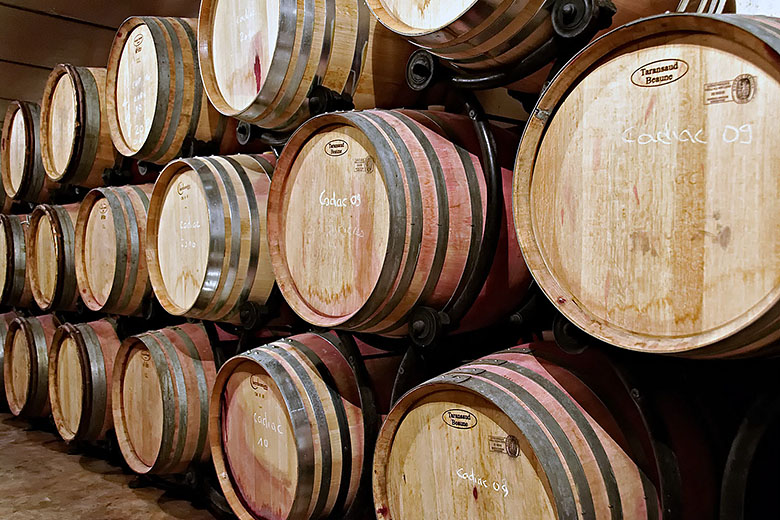
|
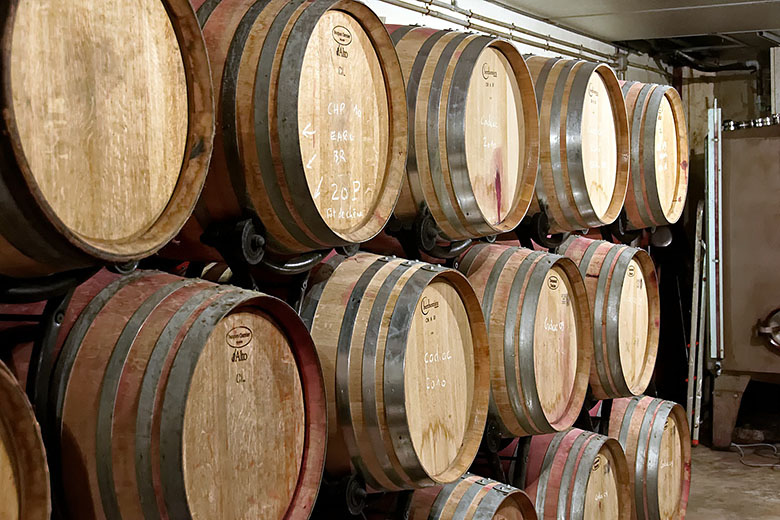
|
As the reddish tinge on some casks shows... |
...the "angels" are enjoying the wine! |
After having toured the inside of the winery, it was time to go take a closer look at the vines. Here, too, Madame Berthet-Rayne proved to be a wonderful and thoroughly knowledgeable guide. We were surprised to learn that the average age of the vines is forty years, but some are almost twice as old. Large parts of the estate are covered with galets roulés, rounded stones polished by the waters of the Rhône over thousands of years. These stones, characteristic of this area, soak up the heat of the sun during the day and keep the plants warm with it at night, thus allowing the grapes to reach a very high level of maturity.
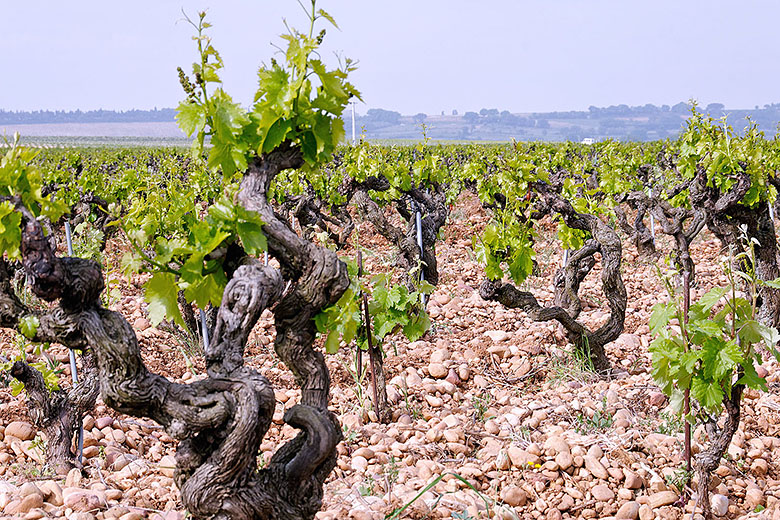
|
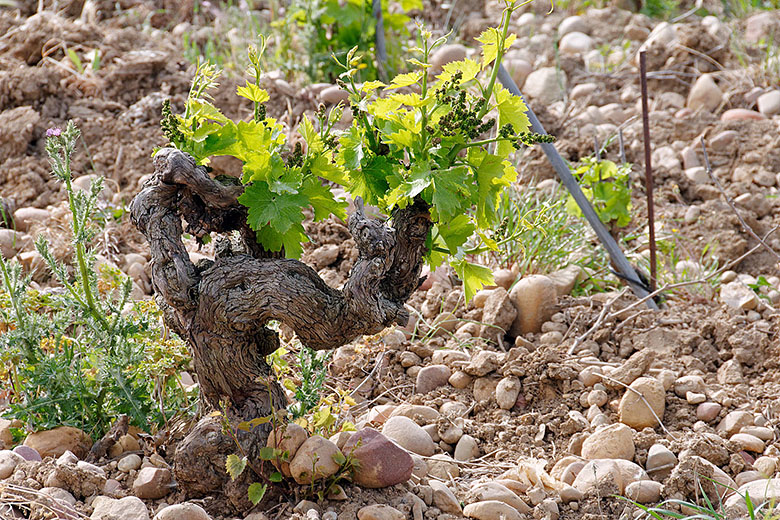
|
The vines amid the galets roulés |
Some of the plants are truly photogenic! |
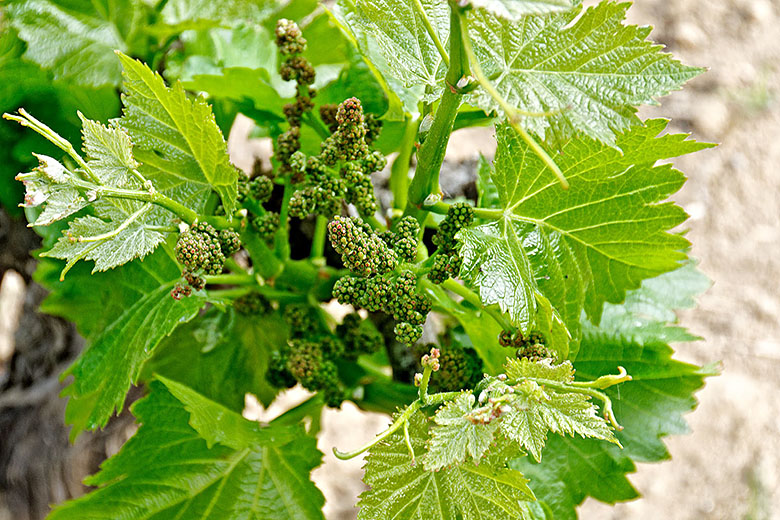
|
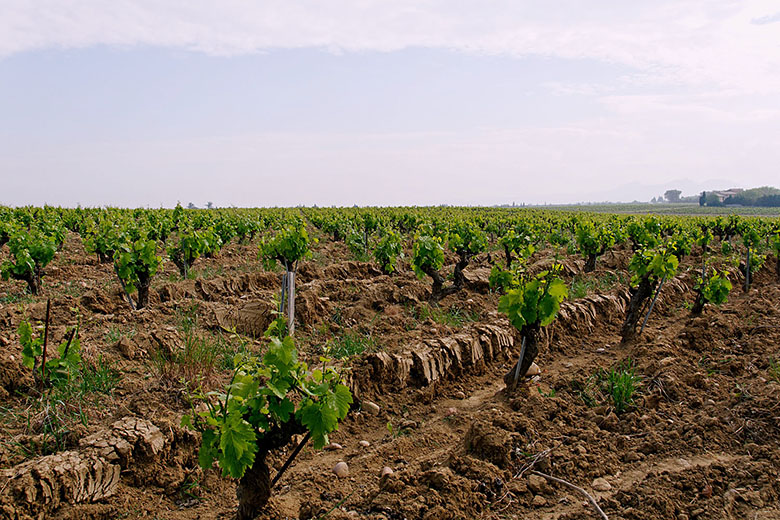
|
The buds are starting to show |
Not all parts of the vineyard are covered with stones |
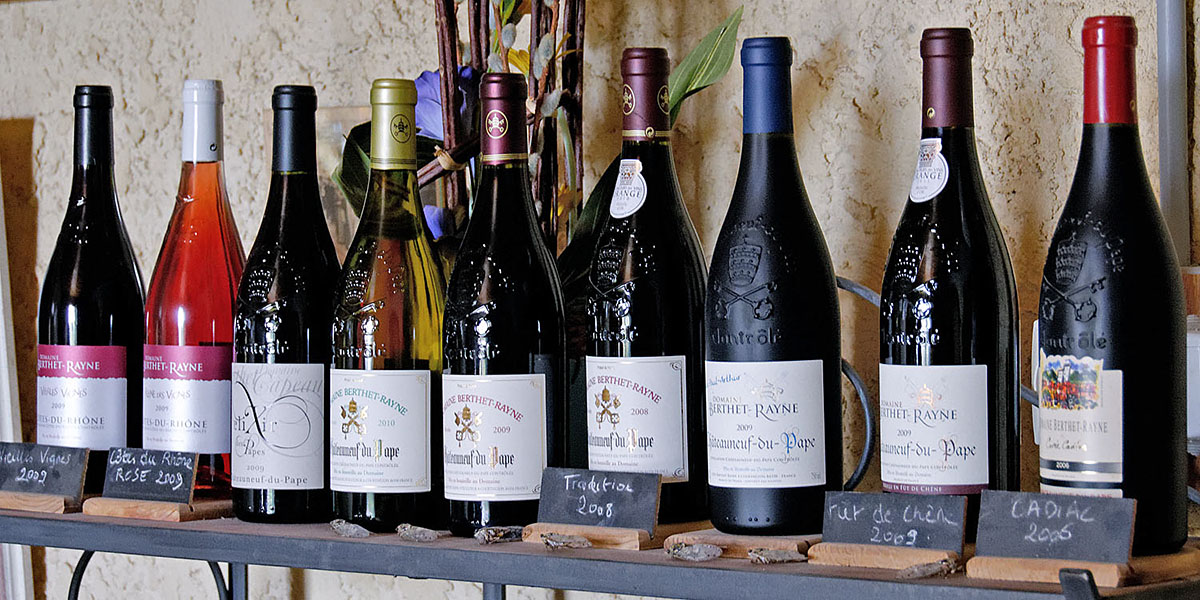
|
And now for the serious stuff: a taste of the superb Berthet-Rayne line of products! |
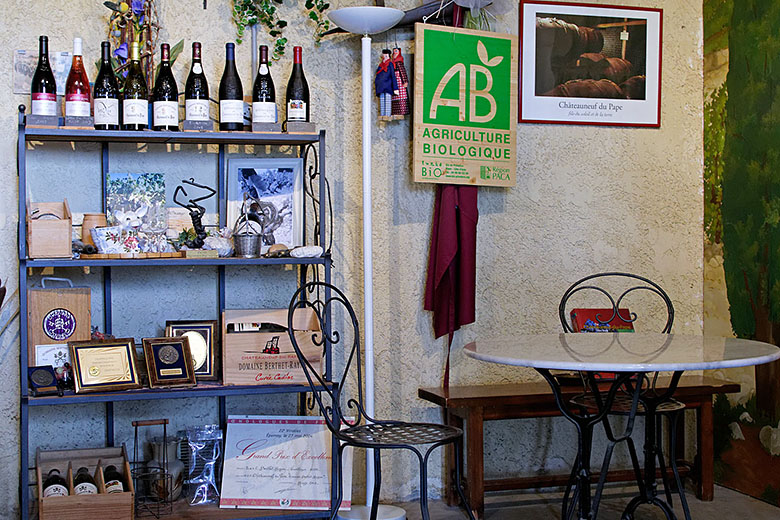
|
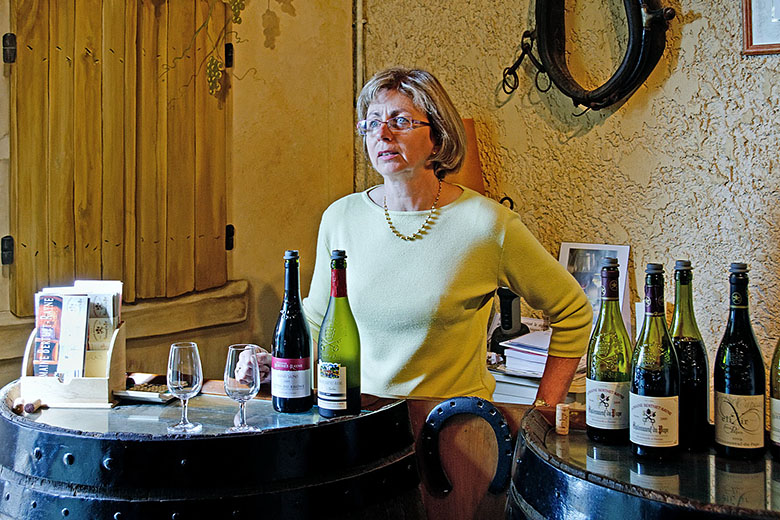
|
A place to taste, to admire, to buy... |
Madame Berthet-Rayne does the honors |
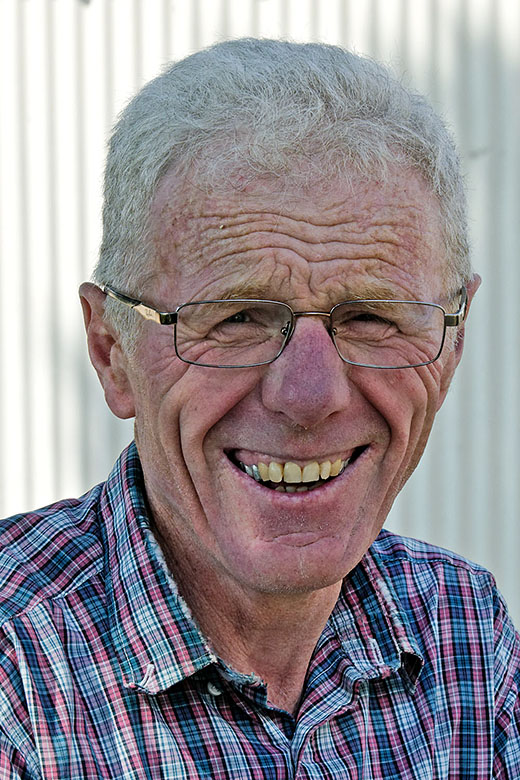
|
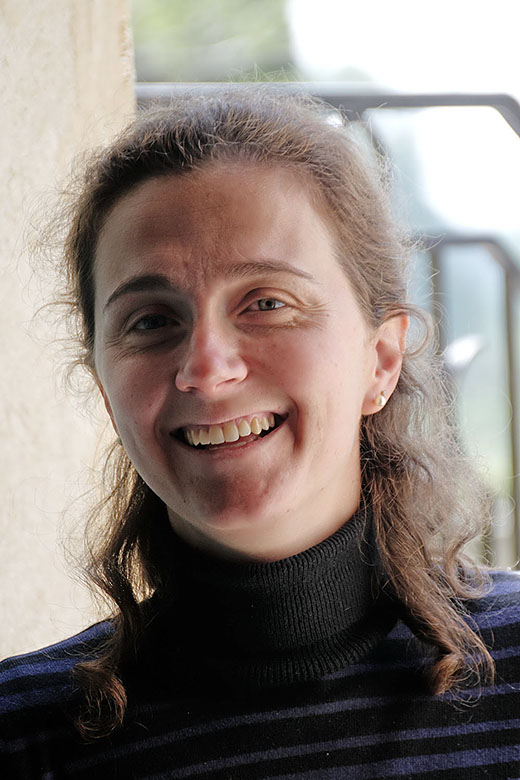
|
Christian Berthet-Rayne |
Daughter Laure Capeau |
To catch a glimpse at how wine is made and to listen to the explanations of experts who are understandably enthusiastic about and proud of their product was a rare treat. Both Didier and I enjoyed our visit enormously and are truly grateful to the whole Berthet-Rayne family for their warm welcome and patience in answering our questions. We did purchase a few bottles of Châteauneuf-du-Pape from the estate, and it is without a doubt outstanding. Having seen where it comes from and how much work goes into it only heightens the pleasure of savoring the wine. The good news is that you may well be able to enjoy some of these fine wines yourself! For instance, you could purchase a few bottles at the estate:
Domaine Berthet-Rayne
2334, route de Caderousse
84350 Courthézon
France
Phone: +33 490 70 74 14
Fax : +33 490 70 77 85
web: http://www.berthet-rayne.fr/index_gb.html
email : christian.berthet-rayne@wanadoo.fr
GPS: 44° 5.835'N, 4° 51.237'E
If a personal visit is not convenient, you can consult a list of Berthet-Rayne importers to see if it is possible to order Berthet-Rayne wine in your country. It is clearly well worth investigating, and if you manage to get a taste, we bet you'll be glad you did!
Home | Site Info | Family | The Area | Trips | France | Work | Rants | Photography | Odds & Ends
This page was last modified on July 25, 2012
Send feedback about this page to feedback@kiechle.com
https://www.kiechle.com/oddsends/berthet-rayne/index.htm
(optimized for Retina display)
All contents © 1999-2025 The Kiechles